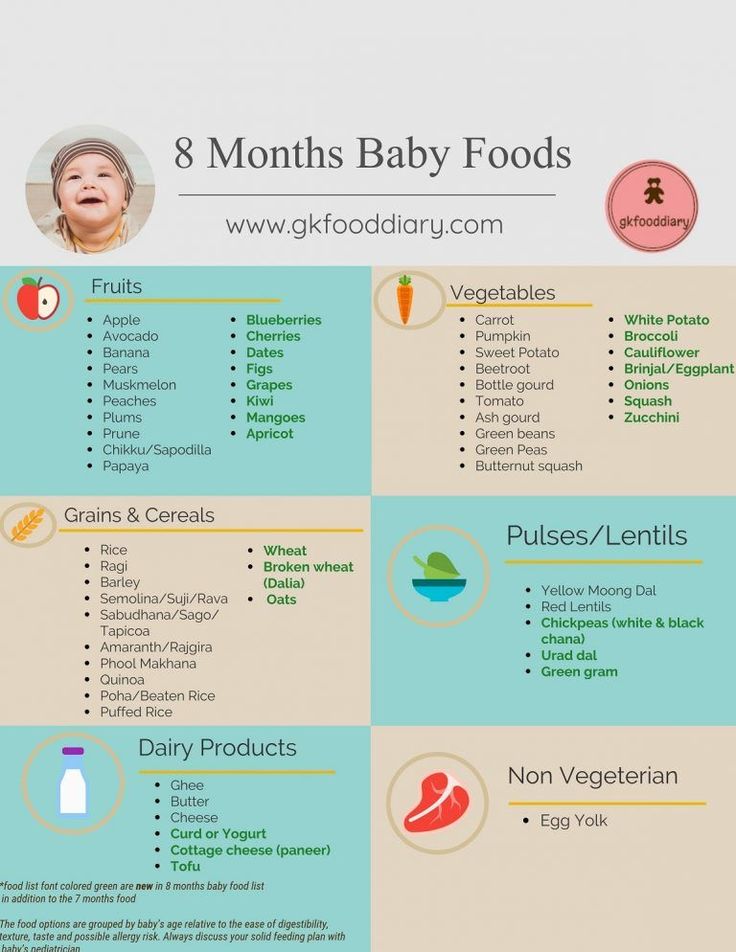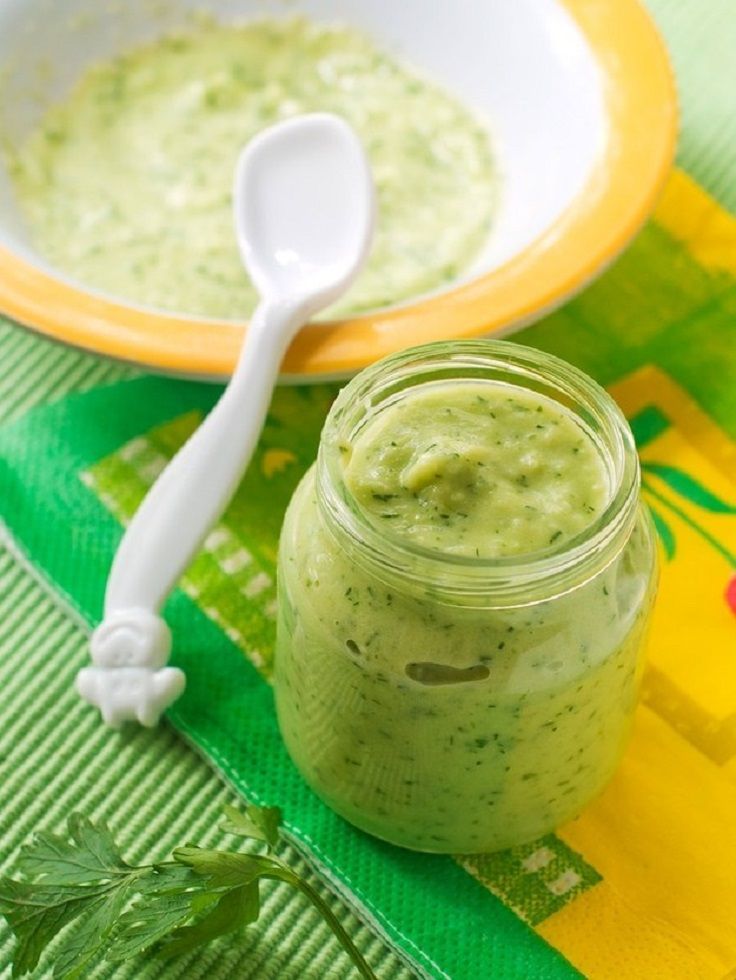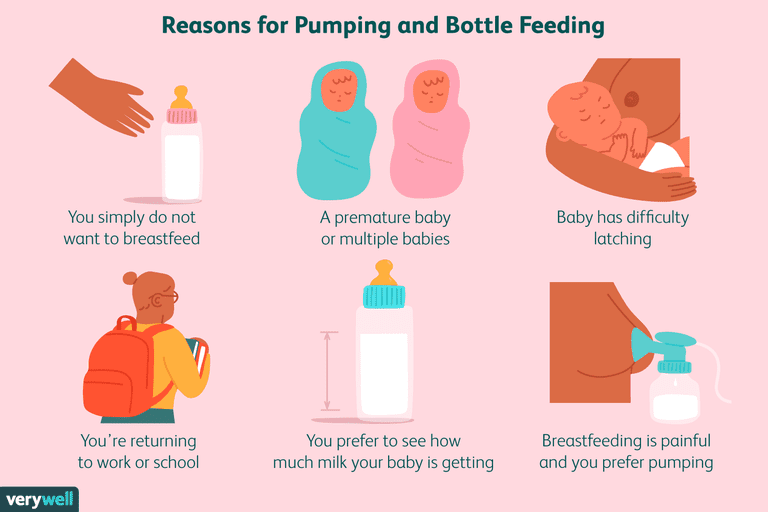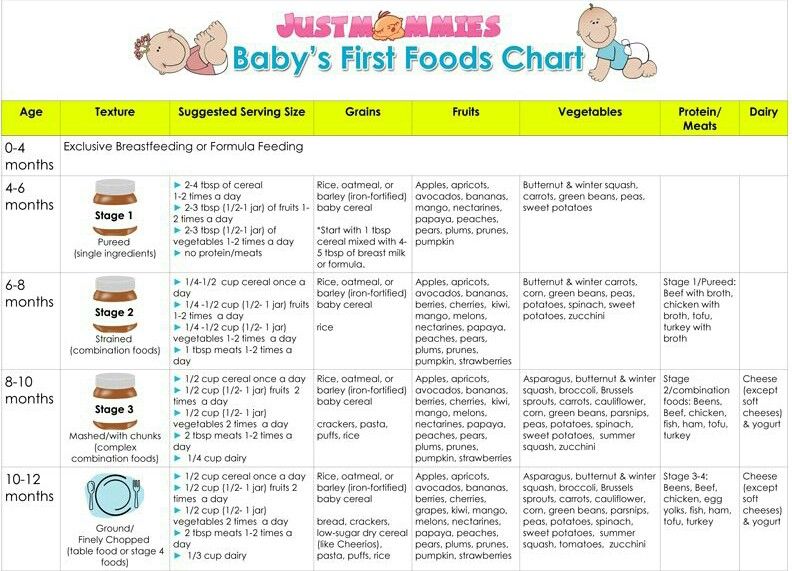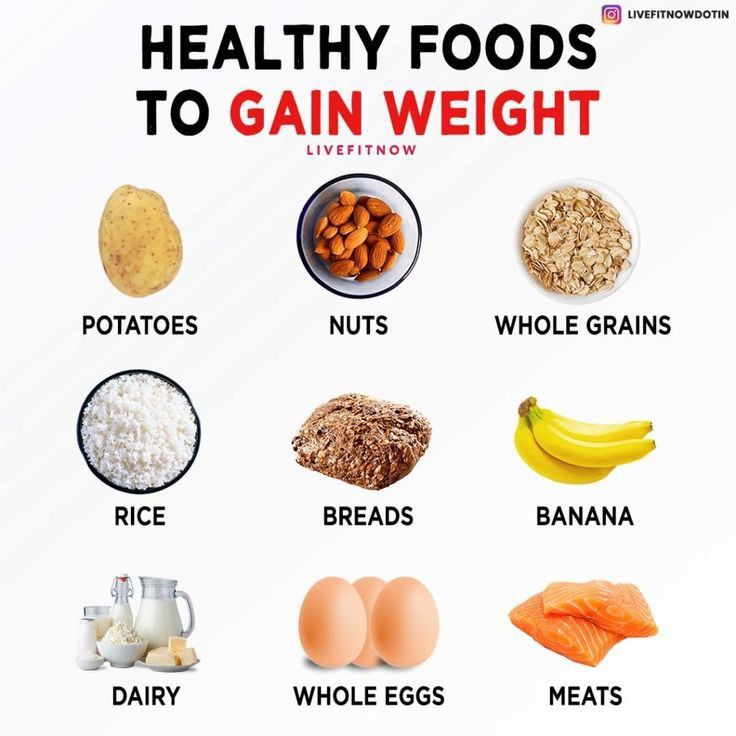How to feed a baby bunny with bottle
Caring for Newborn Baby Rabbits
IF THESE ARE WILD BABIES
It’s that time of year again. Wild babies everywhere. But are they at risk?
Wild rabbits hide their nests in plain view, often in the middle of your yard, bushes, etc. If you find a nest that has been disturbed, do the best you can to restore it and leave the babies in there. If a dog discovers the nest, do your best to restore it (with grass, leaves, whatever mama has used), make sure the kits are in there, and find a way to keep the dog(s) away from the nest. Mama will return for her babies and taking them away will seriously decrease their chance of survival. If you do not see the mama—DON’T WORRY—they only nurse their babies a few minutes a day, then they stay away so as to not draw predators to the nest.
If a kit is injured or an animal brings you an injured baby, if you have no choice but to help a baby, please do not try to care or it yourself—-get it to a rabbit vet or a wildlife rehabilitator
- Local wildlife rehabilitator: https://www.
nwrawildlife.org
- List of rabbit vets: http://rabbit.org/vet-listings/
The best thing you can do for wild babies is to leave them alone (restored to the nest) or, if injured, get them to a rabbit vet or wildlife rehabilitator.
DOMESTIC/PET RABBITS
WHERE TO PUT THE BABIES
Make the babies a soft nest area in a box with clean towels. We like to put one folded towel on the bottom and another bunched on top of that, so the babies can snuggle into it. You can also purchase soft nesting wool from a pet store and put that on top of the towel. You can also take whatever nesting material they were in and put it in the box as well. Cover the box almost entirely with a light towel, making sure that there will be enough air so the babies do not suffocate. Leaving about a one inch gap at the top is usually sufficient. Keep the babies in an out-of-the way, QUIET area, such as an adult’s bedroom. If the room temperature is between 68-72 degrees you will not need to provide extra heat, but if it’s cooler than that you will need to provide extra warmth.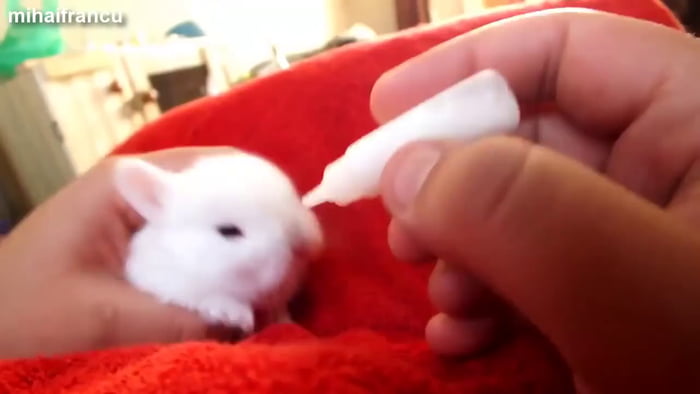 Use a heating pad set on low and slip it under one half only of the box. We do it this way so that the babies can move to a cooler area if it gets too warm. DO NOT put babies directly on heating pad, as babies can burn themselves very badly.
Use a heating pad set on low and slip it under one half only of the box. We do it this way so that the babies can move to a cooler area if it gets too warm. DO NOT put babies directly on heating pad, as babies can burn themselves very badly.
If the babies were with their mamma, but she is not caring for them (and you are sure she is ignoring them) you may need to separate her from them so they will not get hurt. Rabbit milk is very caloric and the kittens (baby rabbits) only nurse for a few minutes a day, so if you think that she is not caring for them based only on the fact you don’t see them feed…think again. If you do think they are being neglected, you can check: Are they cold? Are they making crying sounds for more than a few minutes before (or at) feeding time? Are they blue? Is the skin shriveled? Check for dehydration: gently pinch together the skin at the nape of the neck. If it sticks together or stays in a tent, they are dehydrated. A healthy kit has a round belly, is warm, gains weight on a daily basis, and snuggles with its litter mates. If they are dehydrated, cold, losing weight or becoming injured, of course, something must be done
A healthy kit has a round belly, is warm, gains weight on a daily basis, and snuggles with its litter mates. If they are dehydrated, cold, losing weight or becoming injured, of course, something must be done
WHAT TO FEED THE BABIES
Baby rabbits should be fed Kitten Milk Replacer (KMR) or goat milk, which you can buy at pet stores, or sometimes even a local veterinarian’s office. Because rabbit milk is the most caloric of all mammals, we add in one tablespoon of 100% heavy whipping cream (no sugar) to each can of KMR. Most kits will not nurse from the baby animal bottles you can buy at stores. Instead, use a sterile oral syringe, which can be purchased at most pharmacies. A better alternative are these nipples, which come the a syringe, but you may not be able to find them locally/right away (link).
It is best to feed baby rabbits no more than twice a day, but sometimes it takes more feedings to get an adequate amount into them, especially at first.
How much to feed varies greatly on what breed of rabbit you are feeding, and how big the kit is, but here is a basic guideline for the daily amount to feed a domestic rabbit who will be approximately 5-6 pounds as an adult (average rabbit size). You can increase the amounts as needed for larger breeds.
To help the kits maintain healthy gut bacteria, go to your local health food store (and get a bottle of ACIDOPHILUS. Ask for the capsules that have the “grainy stuff” inside (they are easier to mix than the “powdery stuff”) and add a bit to the formula at each feeding.
ALL amounts below should be divided into two feedings per day.
- Newborn – 1 week
- 4-5 cc formula
- 1-2 weeks
- 10-15 cc formula
- 2-3 weeks
- 15-30 cc formula
- 3-6 weeks, until weaned
- 30 cc formula
HOW DO I DO THIS?
Baby rabbits feed from their mothers while lying on their backs.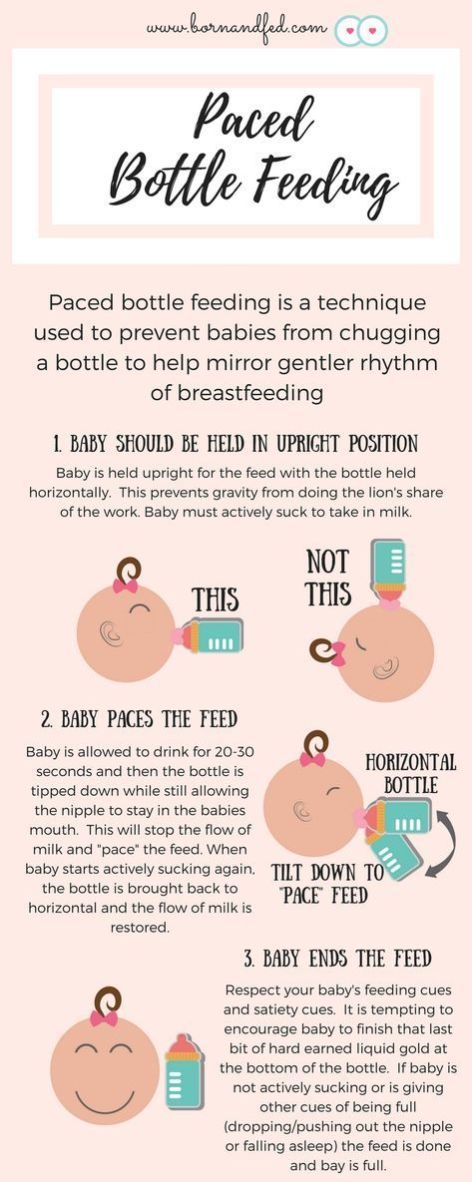 You may loosely wrap baby in a soft face cloth or hand towel and lay it on your lap or in the crook of your arm. If bunny will NOT eat this way, of course, do the best you can. It is ABSOLUTELY CRUCIAL to let the baby eat at it’s own pace—especially if it is not suckling from the syringe willingly. If you squirt the liquid in too quickly you can aspirate (get liquid in) the lungs and the rabbit will suffocate.
You may loosely wrap baby in a soft face cloth or hand towel and lay it on your lap or in the crook of your arm. If bunny will NOT eat this way, of course, do the best you can. It is ABSOLUTELY CRUCIAL to let the baby eat at it’s own pace—especially if it is not suckling from the syringe willingly. If you squirt the liquid in too quickly you can aspirate (get liquid in) the lungs and the rabbit will suffocate.
Until their eyes open (10 days): After each feeding it is important to make the bunny defecate and urinate to keep the intestinal tract and urinary system running smoothly. Use a soft cloth or a cotton ball moistened with warm water and gently stroke the genital area until the bunny starts producing stool and urine. Keep stroking until the bunny stops. You are replicating the behavior of the mother rabbit who would lick her young to stimulate them to go to the bathroom. The stool will be soft and may be varying shades of green and yellow. If the urine is brown and gritty, the buns are not adequately hydrated and you need to get them to a rabbit vet ASAP—-it is an emergency. Be sure to clean baby’s mouth with a damp cloth or paper towel, so that no milk dries in the hair.
If the urine is brown and gritty, the buns are not adequately hydrated and you need to get them to a rabbit vet ASAP—-it is an emergency. Be sure to clean baby’s mouth with a damp cloth or paper towel, so that no milk dries in the hair.
Baby rabbit eyes open at about 10 days of age. You may start introducing them to hay and pellets at this point, but no veggies or fruits yet. Just leave some timothy or orchard and alfalfa hay and pellets in a corner of the box where the babies can easily get to them. Make sure it the pellets are plain, high fiber and fresh, with no added goodies such as dried banana chips or seeds. Don’t ever leave a deep water dish in which a baby could drown; instead, use something shallow and rinse and fill it frequently.
If you have any questions, please contact us.
How to Bottle Feed Orphaned Baby Rabbits
Feeding a newborn baby rabbit isn’t easy. Knowing how to bottle feed orphaned baby rabbits can be overwhelming and confusing. The clock and the odds are against you, because the survival rate when bottle feeding baby bunnies is pretty slim. The good news is that it can be done!
The clock and the odds are against you, because the survival rate when bottle feeding baby bunnies is pretty slim. The good news is that it can be done!You are not alone, because I have been in the same situation myself. However, before you attempt to feed a baby rabbit (including orphans, runts, or abandoned domestic or wild baby rabbit kits), you need to make sure they really do need your intervention. Why? Because it is simply very easy to kill an orphaned baby rabbit if you don’t do it correctly or you FEED THEM THE WRONG FORMULA MIX.
It’s not impossible to successfully hand-feed a baby bunny, but you must have good information and you need it fast!
There is A LOT of really bad information on the internet and if you pick the wrong info to guide you, you don’t get a second chance. I know this, because it happened to me. I lost one of my orphaned baby rabbits from bad information. Most people mean well. Sometimes some of these people happen to be rabbit breeders who don’t know any better and others, well, let’s just say they have no business giving anyone advice on a topic they don’t know anything about!
You need someone who has done both the research and rabbit raising.
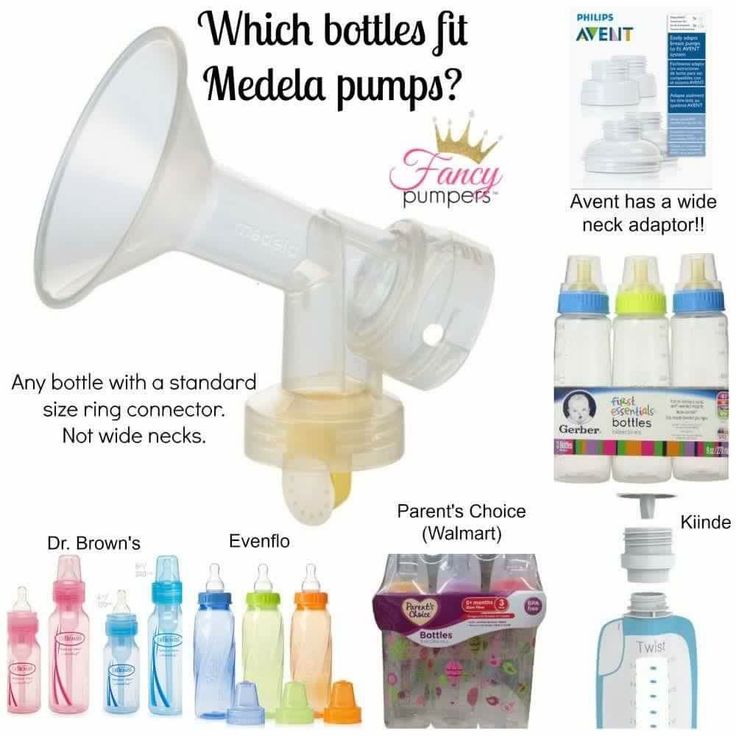
I may not be a vet, but I happen to have raised pet rabbits since before the internet was commercialized and when dial-up was king. Rabbits are my absolute favorite animal! Most importantly, I have successfully hand-raised two fat and happy rabbits aka the “Bugglets” from birth. It was really an undertaking trying to find the best practices for this emergency mission!
I researched like crazy online the second I knew my rabbit kits were in trouble! I tried everything good, knowledgeable people had to offer. We held mamma bunny on her back and put the babies on her, but she wasn’t producing milk due to stress. (Just an FYI, there is a shot your vet can give the doe to help her milk come in, but it needs to be done within the first 3 days.) I contacted my local 4-H leader, posted to rabbit Facebook groups, contacted a local rabbit breeder, talked with a volunteer at the animal shelter, and did massive amounts of research online including watching YouTube videos.
What’s crazy is that even though lots of people breed and raise rabbits, it turns out there isn’t much good information out there about this.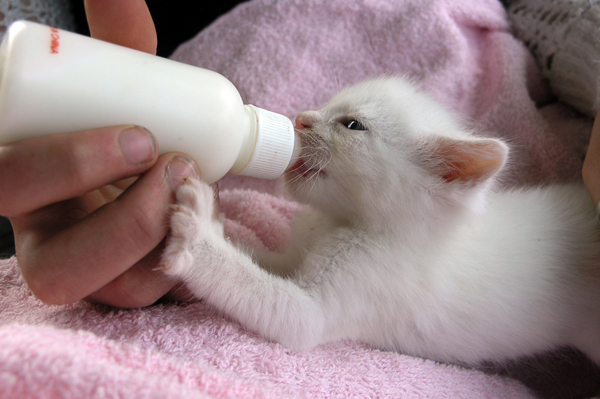 In my area, rabbits are considered exotics by veterinarians and they only know the basics, basically. I really felt that I was on my own. That’s why I had to put this information out there.
In my area, rabbits are considered exotics by veterinarians and they only know the basics, basically. I really felt that I was on my own. That’s why I had to put this information out there.
AND, before anyone judges me for being such an irresponsible pet owner, here is a little background. The doe that kindled the babies was a rescued feral rabbit that was captured and came home with me THREE days before she gave birth. She and her new babies were saved from a pest control issue that was likely to involve them being poisoned to death.
I want you to have hope, and I want you to know that you can do this!
Bottle feeding a newborn baby rabbit can be challenging for a number of reasons, but when you are determined it is definitely possible. I had to learn through trial and error. The first thing I tried was a baby rabbit formula recipe that I found on YouTube from a rabbit breeder. Unfortunately, I didn’t have much luck with it. It kept them alive, but they were terribly bony and were not gaining any weight.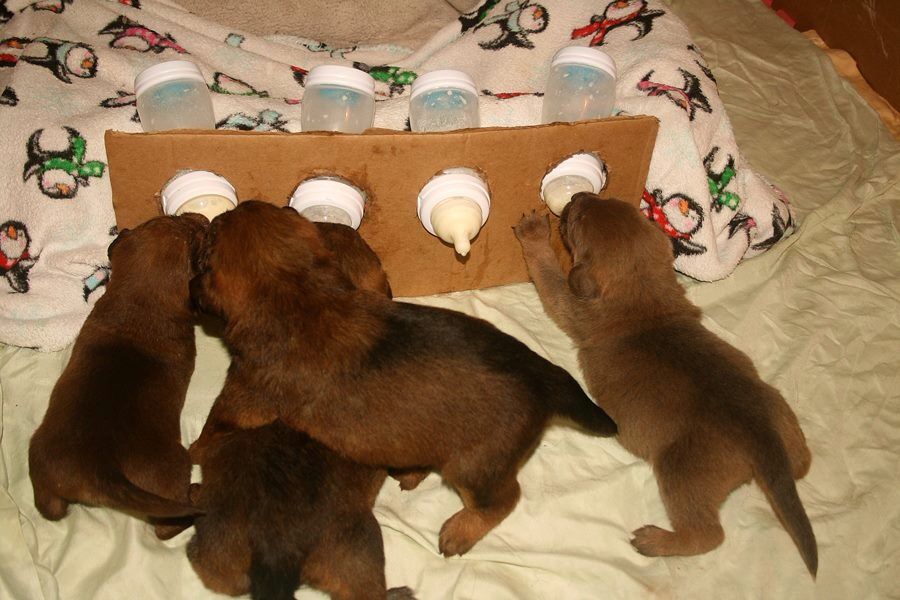 They just weren’t getting the calories they needed. I was feeding them every 3 hours, but they still weren’t getting enough. It also had stuff in it that didn’t sound very good for rabbits.
They just weren’t getting the calories they needed. I was feeding them every 3 hours, but they still weren’t getting enough. It also had stuff in it that didn’t sound very good for rabbits.
Then, I made the fatal mistake of adding a touch of organic grass-fed cow’s cream to the formula to help with calories. Yeah, I really messed that up, and I lost the kit that was initially the strongest of the three! You see, rabbit milk has a really high fat and protein content. (According to a report published in 2006 by World Rabbit Science titled, “Rabbit Milk: A Review Of Quantity, Quality and Non-Dietary Affecting Factors.”)
The problem was, their little tummies aren’t well-suited to digest cow’s milk and they got really bad diarrhea, which is super-dangerous for baby bunnies and pretty darn messy to boot!
Losing one of the three baby bunnies made me feel hopeless!
I started with three and was down to two. I was heart-broken, stressed, tired and scared I was going to mess up it up for the other two, but I still kept going. Then a friend mentioned something I should have done from the start – raw goat milk.
Then a friend mentioned something I should have done from the start – raw goat milk.
Duh! I knew all about the benefits of raw goat milk, but was too tired to get my brain to see the obvious. After a couple feedings of diluted unflavored Pedialyte, I immediately switched them over to raw goat milk and their diarrhea cleared up. Keep in mind, that raw goat milk contains lots of good enzymes that help with digestion, which is something young kits really need, so I didn’t heat it past 100 degrees Fahrenheit.
But even with the raw milk, they just weren’t gaining any weight.
Those hungry little babies were just not getting the fat and protein content their tiny bodies desperately needed. I needed to up the fat and protein concentration, because goat milk is low in both. That’s when I got the idea to MIX POWDERED GOAT MILK with the raw goat milk.
Being an accounting gal, I studied all the food labels and slapped all the appropriate numbers into an excel spreadsheet. I needed to find the exact amount of powder to add to the goat milk to increase the percentage of protein and fat to the closest it could be to true rabbit milk without going overboard. Let me tell you, it takes a lot of powdered goat milk to bring it up to that level and it looked like a thin milkshake when I was done. I ended up erring on the side of caution and added slightly less than I needed. It was easy to make up for that with extra feedings if needed. Rabbit milk has close to 12% of each fat and protein, but raw goat milk only has about 4% of each. With the powdered milk it increased it up to 8% of each.
I needed to find the exact amount of powder to add to the goat milk to increase the percentage of protein and fat to the closest it could be to true rabbit milk without going overboard. Let me tell you, it takes a lot of powdered goat milk to bring it up to that level and it looked like a thin milkshake when I was done. I ended up erring on the side of caution and added slightly less than I needed. It was easy to make up for that with extra feedings if needed. Rabbit milk has close to 12% of each fat and protein, but raw goat milk only has about 4% of each. With the powdered milk it increased it up to 8% of each.
I was pretty worried that I might hurt them, and that they might get overloaded on extra vitamins and minerals.
Here’s the thing though, I was pretty much out of options and willing to give it a try.
Here is what happened: I fed it to them. They ate it just fine. They didn’t get worse or sick, in fact, they started to gain weight. Then they slowly started to grow. They were totally runty at first! It was so funny, because they looked like fuzzy little button mushrooms with legs. They seemed normal. After a feeding they would fall asleep in my hand. One liked to “groom” my hand after eating.
They were totally runty at first! It was so funny, because they looked like fuzzy little button mushrooms with legs. They seemed normal. After a feeding they would fall asleep in my hand. One liked to “groom” my hand after eating.
Next, their eyes eventually opened, they started “going potty” on their own, and they turned into TOTAL LITTLE PIGLETS. They were great eaters with huge appetites! That is how they got nicknamed the “Bugglets.” (A bugglet is something like a cross between a bunny and a piglet.)
Here is the cool thing. They didn’t just survive, THEY THRIVED!
Our orphaned baby rabbits got so strong and healthy eating my custom baby rabbit formula recipe, that they practically kicked my butt every time I had to feed them! They loved to eat so much I could hardly contain them! Scrappy little Bugglets they were and still are. Said in my best Yoda voice, of course. 🙂
I don’t know if it helped that they were born on St. Patrick’s day of 2017, but it sure didn’t hurt. It is pretty darn lucky that they survived, especially considering their back story.
It is pretty darn lucky that they survived, especially considering their back story.
SO YES! YES YOU CAN SAVE THOSE BABIES!!!
Instructions for bottle feeding a baby rabbits, including my baby rabbit formula recipe:
I will tell you exactly what I did, so you can have a fighting chance for your “bugglets.” Keep in mind that I am not a vet, and you need to run this by a vet if at all possible. And, it may not work for every little baby. Sometimes there are just things wrong with babies and they aren’t meant to survive long.
I used a common sense approach, backed with lots of research and topped with love and hard work.
This is pretty detailed and in-depth, but when you need to feed orphaned baby rabbits IT’S THE DETAILS THAT MATTER, so here it is:
SHOPPING LIST
(Buy what you can locally, since you’ll need most of it fast! If you can’t find it locally, I’ve provided affiliate links to the items you’ll need. It won’t cost you more and I earn a small commission that helps me spoil my rescue bunnies!)
Must haves right away:
Cosmetic sponge wedges
Cotton Balls
Cotton swabs
1 – Half Gallon RAW Goat Milk (Get it as fresh as possible. Look for goat farmers if raw milk isn’t legal in your state)
1 – 12 oz can of Meyenberg WHOLE Powdered Goat Milk
Small kitchen scale that weighs in grams
Digital thermometer
Miracle Nipples with syringe – get them ordered now! It will take a few days to get them. And most pet stores don’t carry them. (Do try your local vet first, though!)
Must haves for older kits:
Miracle Nipple Mini (at least 2 nipples)
3 – 20 ml luer lock tip syringes
Optional, but very helpful:
Mini mixer
Microwaveable bean bag and/or heating pad
Infrared Laser Temperature Gun
1 ml oral syringes
Best detailed book I have found on rabbit care so far: Raising Rabbit Problem Solver
It’s got a lot of information on rabbit kits and caring for them.
RECIPE
- 1 C. Raw goat milk
- 56 g Meyenberg WHOLE Powdered Goat Milk (No, that is not a typo, and yes that is a lot of powdered milk!)
MAKING THE FORMULA
Measure out 1 cup of milk into a pint canning jar. In a separate container, measure out 56 grams of the powdered milk. Slowly blend in a little at a time until it is fully incorporated. This will take you a very long time if you don’t use a mini mixer, but don’t wait to start if you don’t have one. Mixing it in a blender on low bursts would probably work just fine, too. Cover with a plastic or metal canning lid and ring. Use a permanent marker on Scotch tape to put the date mixed and date the milk expires on the lid. I usually do this at night so the powdered milk can “re-hydrate” better in the fridge at night.
When bottle feeding baby rabbits, you will want to get the warm water, cotton balls, old towels on top of a warm bean bag, and cotton swabs set up in a secure area where the baby bunnies can’t fall or get hurt while you feed them. I just sat my stuff on top of the kitchen table so I could sit down.
You are going to want to cut your cosmetic sponge to a point to better simulate the nipple. Just don’t cut it too thin, or it could break off and they could choke! Plus, they have tiny sharp little teeth that can rub on it and cut it.
Before you start, have your feeding area set up. It is critical that the temperature of the formula doesn’t go above 105 degrees Fahrenheit, so the kits will benefit from the enzymes in the formula. This will help their digestion. To be safe, I go for 100 degrees Fahrenheit, because it can keep getting hotter even after you take it off the heat.
Heat a cup or two of water on the stove until it boils. Remove from heat and let it cool for a few minutes. Using a small plastic cup or bowl filled with a few tablespoons of formula, float it on top (you may need to hold it) and stir. Check the temperature often, because it can heat up rather quickly. Once it is between 98 and 100 degrees, pull it out of the water bath and keep stirring and taking the temp until it stops getting hotter. If you over heat it past 106 degrees Fahrenheit, start over.
Once you have everything set up and within arm’s reach, take a baby rabbit and put it in a towel fold to keep it warm during feeding. I set them on the warm beanbag to keep them cozy. Hold the baby in one hand. The correct position is with your knuckles and the top of your hand facing the ceiling and your fingers tucked under the kit – kind of like how you hold a pot handle or bike handle bar. Make sure the baby is in an upright position, and NOT ON IT’S BACK. With older babies, use your pointer finger over their forehead to put them in a “bunny headlock” if they try and squirm forward.
I know this isn’t how they feed on mamma bunny, but it’s important to keep them from choking and getting formula into their lungs.
Next, dip the pointy corner of the sponge into the formula and gently squeeze the sponge until it is slightly wet, but not saturated. Touch the tip to the baby’s mouth and encourage them to latch. Once they get the hang of it, they get really good at grabbing it with very little help. Let them suck the formula out. Now here’s the hard part: You have to gently pull it back out of their mouth to reload it and they are NOT going to want to let go! They will usually hold on tight, so be careful not to tear it. Keep repeating until they are full, but not overstuffed. This is a slow process, so it is less likely that they will over-eat.
Here is what an overstuffed belly looks like compared to a normal fed belly:
The biggest challenge: Keeping milk from getting up their little noses!When feeding newborn rabbits, the milk naturally wants to travel up their split upper lip and into their tiny nostrils. Yikes! The best thing you can do is pull the sponge out and dab their nose with a clean cotton ball and let them sneeze it out. Let them finish sneezing before you offer more milk. This totally unnerved me, but it was nearly impossible to keep it from happening – just be prepared for it! If you don’t slow down, it can get into their lungs and make them really sick.
IMPORTANT! If your babies haven’t eaten in a while and are dehydrated, start with straight raw goat milk instead of the formula. You can gradually increase the ratio of milk to premixed formula after a few feedings. This will help prevent constipation.
Once they are close to two weeks, you can switch them over to a miracle nipple and syringe for feedings.They will fight it at first, because they are not used to it, but keep trying. Eventually they take it and will get to a point where they suck it dry in less than a minute. I try to slow them down at this point, so they don’t over eat. They can have digestive issues if allowed to stuff themselves.
Here’s a cute video showing how I feed my baby rabbits!HOW OFTEN TO FEED
Baby rabbits normally get fed by mom once every 24 hours. It is usually at night or early in the morning. The mamma rabbits can get away with this because their milk is so rich. YOU however, don’t get off the hook that easily. You must play “catch up” and feed 3-4 times a day, until your baby rabbits start to see progress. Once they are growing well, you can cut back to 2-3 times per day.
WHAT TO DO AFTER FEEDINGBurp them, of course…
Just kidding! 🙂
Newborn bunnies need mom’s help going potty after eating. Since you are now their mom, you get to do this. Using a warm wet cotton ball, gently wipe their belly in a downward motion several times. Then lightly do the same thing to their bottoms. This stimulates them to pee and poo. Be patient, it can take a few minutes.
If you don’t help them do this in the early weeks, they will die. Just be careful not to rub them raw. This can be a challenge if you are having a hard time getting them to go. For me, it helped to stroke their belly more to begin with and then move on to the sensitive parts. But watch out – they are like little squirt guns!
You won’t have to do this forever, just until they start going on their own.
If you do happen to give them raw skin, use a cotton swab to apply some organic coconut oil. This will help protect the area and help the skin heal. You may also notice that their poop looks like little bee pollen granules. I don’t think this is a problem, it’s just what it looks like when they are on formula.
Optional: To help settle their tummies, you can also give them a few ml of fresh organic chamomile tea that has been cooled to 100 degrees Fahrenheit. (I used my 1 ml oral syringes for this.)
CLEAN UPClean up is really important! When done make sure to clean all your supplies with hot soapy water and rinse well. Don’t let the supplies sit and grow bacteria. Wash them right away! I also sanitized everything with rubbing alcohol after washing and rinsed again, allowing everything to air dry. You can also sterilize by boiling your items for 5 minutes. Use a clean cosmetic sponge for each feeding. It helps to get everything prepped for the next feeding ahead of time, especially if you have to do one or two night feedings.
It’s kind of a given that you need to make sure they are kept clean and their bedding is kept dry, warm and clean, but there is also an additional step you should take if at all possible when their eyes start to open. I did this for 3 days in a row. And yes, you are going to love this!
Poop smoothies.
Yes, that’s right. As crazy as that sounds, mom rabbit, and all rabbits for that matter produce two types of droppings. They are regular droppings and “night droppings.” The night droppings are called cecotropes (see-ko-tropes) and are loaded with extra nutrients and beneficial gut bacteria. All rabbits eat their own cecotropes as a way to gain the most nutrition from their food. The babies will eat them when mom leaves them in the nest, and it helps to establish their beneficial gut bacteria.
If you can get a hold of some fresh cecotropes (Sounds fun, right??), you can mix a small amount in their formula and give it to them. It doesn’t take much, and I did mine once a day for three days in a row. Then two weeks later, I did it again. And if you have ever seen the look they give you when you try to feed this too them….
Well let’s just say, it’s the only time I have ever seen a rabbit with the “gag” expression.
Collecting cecotropes is not the easiest thing, even if you have several rabbits. Just make sure it is from a healthy rabbit. From their mom is always ideal, but another rabbit’s cecotropes will still have those good benefits. No other rabbits around? Try getting in touch with a local rabbit breeder.
INTRODUCING SOLID FOODSYou can do all that hard work, and then accidentally kill them with solid foods if you don’t do it right.
I always kept timothy hay in the nesting box, and they started nibbling on that as they got older. This is a great, healthy way to start them on solid foods!
Next, you want to only introduce one food at a time. First, they got to try spinach. Then clean, wild non-sprayed dandelion leaves. Then I gave them chard, which they hated! You can buy a spring greens mix at the store and pick one type of green at a time and see how they do. DO NOT GIVE ANY FRUIT OR SUGARY VEGGIES LIKE CARROTS until they are much older. (4-5 months) Because they had such a rough start, their tummies are better off without the extra sugar right now. To this day one of my babies gets diarrhea when given anything too sweet. Here is a list of approved foods for rabbits. As a side note, it is never a good idea to give your rabbits too many sweets or high-carb, sugary foods.
Additionally, I waited until they were about 6 weeks old before introducing pellets. I did this very, very slowly. I fed maybe ½ teaspoon and waited. If they got mushy poop, then I backed off and waited. Then I tried again a few days later. I would slowly increase how much I gave them and only as they could handle it. One baby adjusted slower than the other and I was worried she would never be able to handle rabbit pellets. Lucky for us, she eventually caught up with her brother!
Once your baby rabbits are 7 to 8 weeks old, you can wean them. This is an exciting time and kinda sad too! Once you get into a routine with those feisty little fur balls, it is sooooo fun to feed them. Since my rabbit kits got such a terrible start, I waited until 8 weeks to even start weaning them.
First I cut out one feeding, and then a few days later I cut out another. Once they were down to one feeding, I waited a few more days and gave them a ½ of a feeding for a few more days. Then they were done! There is no exact way to wean, the whole idea is to be gradual and to make sure increasing their intake of solids isn’t causing them problems. If they start to get any mushy stools just slow down.
It is extremely rewarding to save baby animals that would surely die without your help! Once you have successfully raised them, you now get to decide whether or not to keep them. For me, it was out of the question to adopt them out to someone after what we went through together, but that may not be possible for you, and that’s OK!
Every time someone hears our story and shows interest in adopting them, all I can think to myself is “Hey, these are my baby rabbits!” Our family is going to enjoy the fruits of my hard work for years to come! The “bugglets” have come to live with us. They are litter box trained, HILARIOUS to interact with and we call them our “dog rabbits.”
I hope this information helps you in some way as you take on the challenge of feeding newborn rabbits. I would love to hear about your success, so please keep me updated on your baby stories!
This post may contain affiliate links. Meaning I receive a small commission when you purchase from my links, at no additional cost to you… which helps me spoil my adorable rescue rabbits.
Disclaimer: Jaimie is not the great and powerful Wizard of Oz, a lawyer, a doctor, a veterinarian, or a CPA. Nothing your read in my blog is a substitute for professional advice and doing your own good research. Remember that just because someone has credentials doesn’t guarantee their advice is golden or perfect. Put your smart hat on and do your due diligence. Good luck!
Related Articles:
Baby Rabbits: 5 Signs They Need You to Intervene
The Scoop on POOP: What You Need to Know About Rabbit Doody
The Easiest Way to Litter Box Train Your Bunny Rabbit
Comments are now closed. Feel free to search this page and prior comments to find answers to your questions. If you don’t know how to search a web page to find a keyword or phrase, I’ve provided easy instructions here. Please contact your local veterinarian if you have an emergency. If you have a unique question that hasn’t been addressed, you can reach me by following the instructions on my contact page.
Artificial feeding of rabbits
– Hello. In the summer of 2014, all adult rabbits died overnight. They fought in convulsions, and blood came out of their mouths. There were small rabbits of different ages left. My husband and I tried to get them out: we fed them from a syringe and from a bottle with cow's milk. At first everything went well, but growing up, the rabbits began to die after feeding. They began to squeak, stretched out, as if they had convulsions. Sometimes after lying down a bit, they would leave. I began to dilute milk with water, maybe they had colic in their tummies? Of the 16 pieces, only 8 survived. All the rabbits of my acquaintances died, the symptoms are the same. I would like to know the cause of the death of the rabbits, as well as how to properly feed the babies if they were left without a mother? nine0004
E. A. Kuzmina, Rostov region Morozovsk
Feeding rabbits is troublesome and in many cases almost hopeless. With artificial feeding, mortality is much higher than with a living mother. So there will be losses, and you immediately tune in to this and do not panic.
The main question in the artificial breeding of rabbits is what to feed? As experience shows, feeding with dry dog (bitch) or goat milk gives good results. In different sources, you can find options for mixtures for artificial feeding of rabbits. Here is a recipe for one of them: 1 part heavy cream (not less than 20%), 2 parts goat milk, 2 parts ready-made milk formula for kittens, bifidumbacterin for s / f on the tip of a knife and 1 drop of trivitamin per 2 ml of the finished mixture. nine0005
How to feed? Pet stores sell various kits for artificial feeding of fluffy offspring. But if you can't find them, don't despair. You can buy an ordinary small syringe without a needle in a regular pharmacy, or a pipette, or the cheapest eye drops in a small plastic vial. Drops should be poured out, the vial should be washed and then it can be used as a bottle for milk. Or you can take a simple baby bottle with a pacifier. Although the latter option is more suitable for already grown rabbits. nine0005
It is better to feed the rabbit in an upright position, holding it in your hands like a soldier and gently pouring milk into its mouth in small portions. It is recommended to feed several times, as artificial nutrition is inferior in fat content and composition to mother's milk. But at least twice a day. A newborn rabbit needs about 5 ml of milk per day. So, with five meals a day, 1 ml per meal. A week after birth, the rabbits will already need twice as much milk, and at the age of two weeks, the rabbit should drink 15 ml per day. That is, already 3 ml per feeding with five meals a day. The dose of milk should not be increased at once, but gradually, adding a little every day. nine0005
There is one more nuance. Newborn rabbits cannot defecate on their own. Under natural conditions, this process is stimulated by the mother rabbit; in the absence of a mother, you will have to take on this function. To do this, you will need a cotton pad or a napkin, which must be moistened with warm water and massage the rabbit's tummy in a certain way - from the navel to the hind legs. You don't need to go in the opposite direction. The rabbit should empty itself. Do this before every feeding. If the rabbit does not urinate before feeding, try again after feeding. nine0005
At the age of two weeks, grated carrots can already be given to rabbits. You can give fresh small grass or soft hay.
Be sure to put water in a shallow bowl, and bring the young rabbits to the drinker from time to time so that they learn to drink. By the age of one month, the rabbits are already able to eat all the "adult" food, and may well do without milk.
Daria RUDENKO
Feeding baby rabbits: features, techniques, tips
Mother feeding for the most part falls on the first three weeks of life of baby rabbits. Find out what to do if an unforeseen situation happens and the babies are left without a mother. nine0038
From three to six weeks old, baby rabbits need less milk and more pellets and hay. During the period when the rabbits no longer need mother's milk, they are weaned.
The physiologically reasonable weaning age is 3.5‒4 months and if you have a rabbit of this age at home, you can immediately give him roughage, additional milk feeding is used only if he suffers from malnutrition. At home, the rabbit is allowed to nurse her babies longer - up to the age of 6-7 weeks. nine0005
Loss of a nurse
Sometimes unforeseen situations happen - the death of a female or mastitis, aggressive behavior or refusal to feed the cubs. Whatever the reason, from now on, the care of the rabbits falls entirely on the shoulders of a person.
Further actions depend on the age of the rabbits and the presence of another female who can be assigned to feed them. Read this article to learn how to properly transfer babies to a foster mother.
If it is not possible to transfer the cubs to another female rabbit, they are artificially fed and some important points must be taken into account. nine0005
Sadly, the survival rate of motherless rabbits, if their eyes have not yet opened, and this is the age of 10-12 days, is very low. Mortality with inexperienced care can reach 80-90%. This means that out of ten rabbits, one or two survive.
There are many reasons for this catastrophic mortality rate, the main ones being:
Before rabbits start eating roughage, there are no bacteria populations in their intestines. If, during artificial feeding with milk formula, bacteria that are abnormal for rabbits of this age are introduced into the body, which can be caused by dirty hands or unsterilized nipples and bottles, this causes severe intoxication and indigestion. Diarrhea is one of the most common causes of death in rabbits. nine0005
Feeding supplies
Buy plastic teat bottles first. Since they are usually sold in pairs or as a set of a bottle and several nozzles, it is important to find the smallest nipples, and which bottle is not a big deal.
If you can get special teats for rabbits, great, if not, kittens will do. As one of the components, milk replacer for kittens is introduced into the formula for feeding rabbits, and some manufacturers include a bottle with nipples in such a set, which is quite convenient. nine0005
Keep in mind that pet sellers often refer to rabbits as rodents or animals. So look for the products you need in one of these sections.
Special plastic syringes with silicone or rubber tips are successfully used.
As an exception, try using a regular eyedropper or eye dropper bottle.
Successful rearing of young rabbits is not an easy task. Rabbits have a complex digestive system, and babies are even more vulnerable. Below is a universal formula formula for suckers of all ages. nine0005
For preparation take:
- fresh whole goat milk - 100 g
- Kitten milk replacer - 100 g
- colostrum (lyophilized colostrum) - 10-15 capsules (1-1.5 tablespoons)
Colostrum is an expensive ingredient, but it is almost impossible to raise very small rabbits without colostrum.
Place all components in a glass container, close tightly, then shake vigorously until the contents turn into a homogeneous mass. nine0005
Prepare a new formula before each feeding. If there are few cubs, you can reduce all components proportionally.
Heat the mixture to 40 °C, it is convenient to check the temperature with a regular thermometer, wipe it with alcohol before use. Keep cooked food in hot water until you have fed all the babies.
For older rabbits (from 14 days old), add up to 1 teaspoon of quality cow's milk cream to the mixture.
Do not use condensed milk - excess sugars, prolonged heat treatment, vegetable fats and other components unusual for natural milk - all this will lead to the fact that the product can do more harm than good. nine0005
Cow's milk is inferior in nutritional properties and digestibility to goat's milk, moreover, it has less antibodies and larger fat globules, so it is undesirable to use it for feeding rabbits.
Feeding procedure
Remember, the most dangerous thing that can happen to young rabbits during feeding is inhalation of the mixture. This will lead to instant aspiration when the baby stops breathing and passes out, or to the rapid development of pneumonia. Therefore, when feeding, do not rush, do everything carefully, be leisurely, be patient and follow the steps below. nine0005
1.
Disinfect syringes, nipples and bottles in a special steam sterilizer or by boiling water.
2. Cleaning hands
Wash hands in hot running water with laundry soap (toilet soap is not used due to strong odor) and dry thoroughly.
3. Precautions
When feeding older rabbits, lie down on the floor - swift fidgets can jump out of your hands in no time. Place a towel on your knees. Wrap the bottle in flannel, the cub will rest on it with its front paws, as if it were fed by a rabbit, besides, the milk will not cool down. nine0005
4. Feeding
Hold the baby in one hand and the bottle in the other. Hold the baby horizontally with his tummy down, in the most natural feeding position, you can slightly lift the front or turn the baby to the side. Successfully feed rabbits in an upright position. No need to lay the sucker on his back - he can choke. It is enough to simply hold the grown-up rabbits with your hand, avoiding choppy movements.
6. Patience
Rabbits, especially very small ones, often stubbornly refuse to suckle, some may take a day or two for the sucking reflex to develop.
It's not surprising that you might want to force-feed the little stubborn one. Don't do this under any circumstances! Be persistent, but be gentle and careful, squeeze out some of the mixture, moisten your mouth and continue to bring the pipette or nipple to it with a drop of milk, encouraging you to lick off the mixture.
Continue like this until the bunny begins to suck on its own. Sometimes it may take several feedings to be successful. If he grabs the nipple and starts sucking, let him eat at his own pace - no need to squeeze the bottle. nine0005
What should I do if my rabbit has inhaled the mixture and is not breathing?
If a baby rabbit inhales milk formula, the droplets can cause complete airway blockage and fainting. Therefore, you need to act very quickly and take urgent resuscitation measures.
Hold the baby rabbit in both hands, head up, with the palms of your hands firmly on the back and neck, but without squeezing too much. Raise it above your head and lower it down to the floor, moving not very fast, but with determination. Repeat the reception two or three times. The rabbit's insides will rush upward as they move down and push the diaphragm, which may be enough to push air and mixture particles out of the airways. As soon as the rabbit moves, stop immediately. nine0005
You will most likely need to administer antibiotics to prevent pneumonia, please consult your veterinarian about prescribing the drug.
Amount of portions, frequency and features of feeding
0–7 days
Newborn rabbits are fed twice a day, in the amount of 2–2.5 ml of milk mixture at each feeding.
Very small rabbits will not be able to recover on their own. The female rabbit, while caring for the sucklings, licks them, stimulating muscle contraction, which facilitates urination and defecation. nine0005
To prevent overfilling of the bladder and intestines, take the following action into service.
Rub the tummy, including the anus area, with light but firm strokes, as a female rabbit would do. Your task is to stimulate the tension of the abdominal muscles.
The procedure is performed with a finger moistened with warm water, you can wrap it with a damp cloth or use a moistened cotton swab. Manipulation will take from 15-25 seconds to two minutes and you need to continue it until the bladder is empty. nine0005
Some breeders find it best to do this before feeding and great if it works, but the extra pressure of a full belly can speed up and ease the process.
Be careful and persistent, sometimes rabbits cannot empty their intestines and bladder without light massage for quite a long time - up to a few weeks of age. Do not rub too hard as this can cause redness and irritation of delicate skin. If redness is still present, use a soothing calendula ointment. nine0005
8-14 days
The norm for this period is two feedings per day, 5-7 ml each time.
Don't overfeed your rabbit! Once he understands how the system works, he will eat as much as you give. He may eat so much formula that the tummy will stretch, causing discomfort, indigestion and gas.
It is better to underfeed a gluttonous baby than to overfeed. Well-fed rabbits look round and plump, but not like tumblers with stretched tummies. nine0005
In addition, it is important to take into account that the receptors that signal satiety do not work instantly and it takes some time. If the bunny looks hungry and you're not sure he's gotten enough food, wait a minute or two and offer the pacifier again, maybe he won't pounce with the same greed now.
15-21 days
Still two main feedings - 7-13 ml at a time.
By this time the eyes are already open and the rabbits begin to take an interest in what is happening around, including coarse food. nine0005
Timothy or oat hay, rabbit pellets and fresh water should now be constantly present in the cage. Rabbits are offered water not in an automatic drinker, but in a shallow bowl or bowl.
Experienced breeders recommend, even before the moment when the rabbits begin to consume roughage, to artificially introduce beneficial microflora into the body.
To do this, choose a donor - a healthy adult rabbit, not infected with helminths, and take some fresh caecotrophs from him (read about what it is here). nine0005
The resulting balls are kneaded, mixed with a small amount of milk mixture and fed to the rabbit, who, of course, will not be delighted with such food. Treat this event like giving medicine. This technique will make it possible to populate the rabbit's intestines with healthy microflora, and besides, caecotrophs contain many useful substances. Such an introduction of microflora for 2-3 days will be quite sufficient.
You can replace caecotrophs with probiotics, such as the German Olin or the domestic Zoonorm. nine0005
22-42 days
Two feedings of 13-15 ml at a time, the amount of servings may be smaller, depending on the breed and development of the rabbit.
At this time, alfalfa or clover hay is introduced into the diet, as well as granules with a high protein content of 16-18%. You can additionally introduce some sunflower seeds or whole oat grains.
Weaning
A female rabbit feeds her young at home for up to eight weeks or more, gradually reducing the frequency of feedings until the young rabbits lose interest. As early as two weeks, rabbits will begin to nibble on pelleted food and taste hay, but this is no reason to stop feeding them a mixture. On the contrary, during this period, in no case should you stop the main feeding. nine0005
Colostrum containing useful antibodies will help the rabbits to control the development of microflora, and restrain the growth of potentially dangerous colonies.
From 6 to 8 weeks of age, start diluting formula with clean drinking water.

